Swifts are fascinating and agile birds that belong to the family Apodidae. Known for their exceptional flying abilities, swifts are masterful aerial acrobats capable of manoeuvring with incredible speed and precision.
These minor to medium-sized birds are found worldwide, inhabiting various environments, from urban areas to remote landscapes. With a streamlined body and long wings, swifts are perfectly adapted for a life spent mainly in the air.
Notably, they are known for their swift and continuous flight, often feeding on the wing and sleeping while airborne. Swifts are integral to ecosystems as insectivores, contributing to pest control.
Despite their name, they are not closely related to swallows but share similar aerial lifestyles. Swifts’ unique characteristics and behaviours make them a captivating subject for ornithologists and bird enthusiasts alike.
Physical Characteristics of Swifts
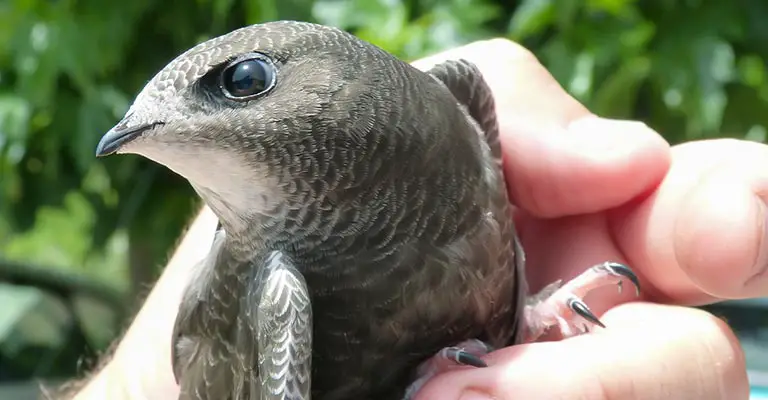
Identifying swifts involves examining physical characteristics, flight patterns, and habitat preferences. These remarkable birds exhibit distinctive features that set them apart from other avian species.
Here are eight key points to help identify swifts:
Sleek and Streamlined Body
Swifts boast a slender and streamlined body designed for efficient flight. Their aerodynamic shape reduces air resistance, allowing them to cut through the air quickly.
The body is typically dark in colour, ranging from brown to black, contributing to its inconspicuous appearance in the sky.
Long, Scythe-like Wings
One of the most prominent features of swifts is their long, scythe-like wings. These wings are well-adapted for sustained and rapid flight.
The primary feathers are pointed, and the wings often appear angular with a distinctive shape, aiding in their acrobatic manoeuvres during flight.
Forked Tail
Swifts typically have a forked or slightly notched tail. This unique tail shape is an important distinguishing feature, setting them apart from swallows with a more deeply forked tail.
The tail’s design enhances its agility and stability during intricate flight patterns.
Rapid and Agile Flight
Swifts are renowned for their incredible flying abilities. They navigate the sky with unmatched speed and agility, performing intricate aerial displays.
Swift, continuous wing beats characterize their flight, and they often soar effortlessly, rarely appearing to glide or hover like some other bird species.
Nocturnal Roosting Habits
Swifts are known to be crepuscular or even nocturnal in their roosting habits. During the day, they are often high in the sky, making them challenging to observe closely.
However, at dawn and dusk, swifts may be seen flying lower as they return to or leave their roosting sites, providing better opportunities for identification.
DistinctiveVocalizationss
While not always easily heard, swifts produce distinctive vocalizations during flight.
These sounds are often described as high-pitched screams or chattering noises. Listening to these vocal cues can aid in identifying swifts when they are not visible.
Urban and Rural Habitats
Swifts inhabit a range of environments, including both urban and rural areas.
They are commonly seen flying over cities, especially in the warmer months, where they may nest in tall buildings or cliffs. In rural settings, they might choose hollow trees or cliffs for nesting.
Group Behavior
Swifts are social birds frequently observed in large groups, especially during migration. Their group behaviour, combined with their swift and synchronized flight, is a characteristic spectacle that aids identification.
Recognizing swifts involves observing their unique physical features, flight patterns, vocalizations, and preferred habitats.
Whether soaring high above urban landscapes or gracefully manoeuvring through rural skies, swifts leave an indelible mark with their distinct characteristics.
Taxonomy of Swifts
Let’s learn about all the taxonomy details of Swifts in a short table:
| Taxonomic Level | Classification |
| Domain | Eukaryota |
| Kingdom | Animalia |
| Phylum | Chordata |
| Class | Aves |
| Clade | Strisores |
| Order | Apodiformes |
| Family | Apodidae |
| Author and Year | Hartert, 1897 |
While not entirely of the same species, the diverse array of birds listed share the commonality of being swifts or swift-like species, each exhibiting unique characteristics and adaptations.
Here’s a brief overview of some of these avian wonders:
Antillean Palm Swift
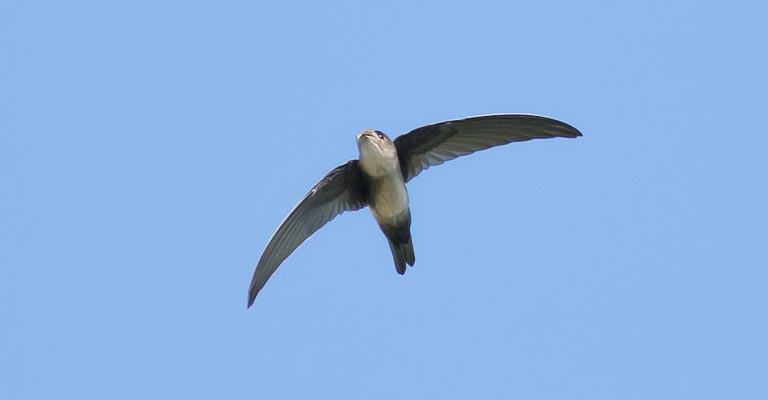
The Antillean Palm Swift is a small, agile bird in the Caribbean region. With a distinctive pale plumage and a slightly forked tail, it is often observed flying swiftly among palm trees, where it builds its nests using plant fibres.
White-throated Swift
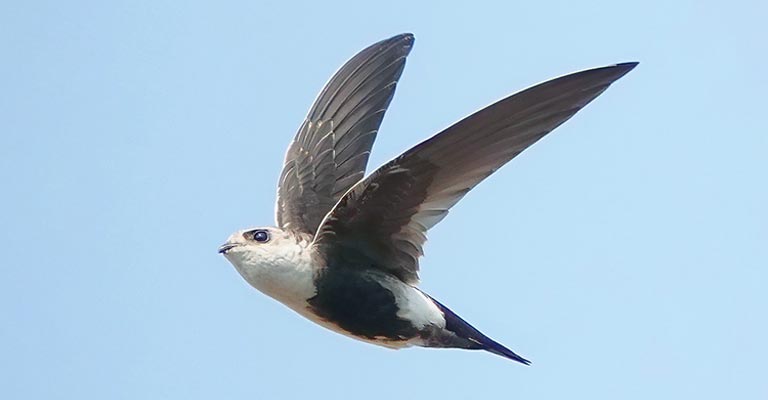
Characterized by its striking white throat and deeply forked tail, the White-throated Swift is a North American species.
These birds are often seen darting through canyons and cliffs with remarkable speed, showcasing their acrobatic flight skills.
Alpine Swift
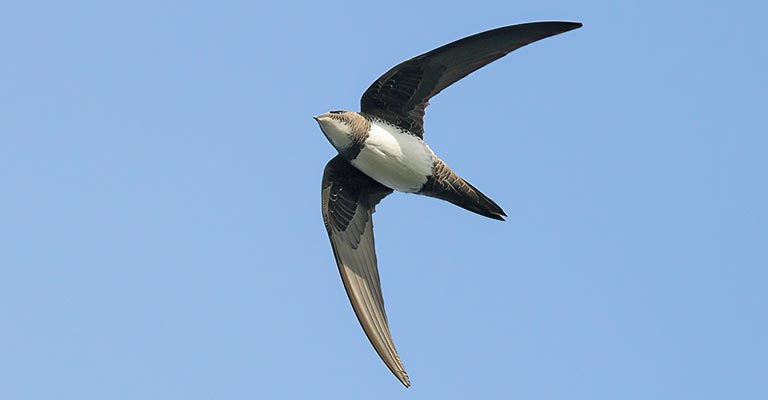
Inhabiting high-altitude regions of Europe, Asia, and Africa, the Alpine Swift is known for its large size and dark plumage.
Recognizable by its distinctive white belly and deeply forked tail, this species is well-adapted to life in mountainous landscapes.
Pacific Swift
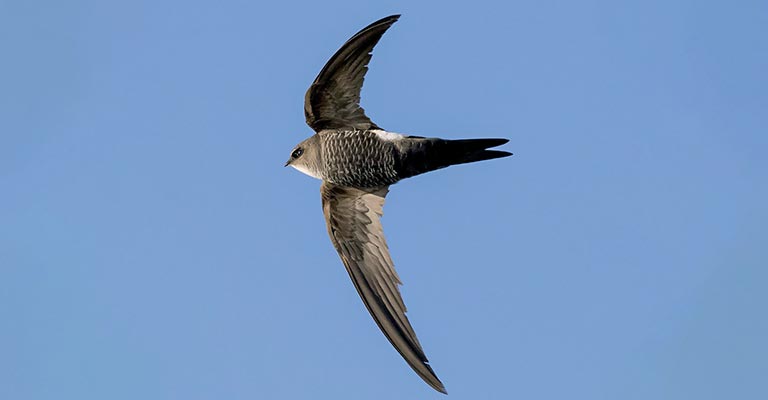
The Pacific Swift is a migratory bird found in the Asia-Pacific region. With long, scythe-like wings and a streamlined body, it covers vast distances during its annual migrations, often seen in large flocks soaring gracefully over open water.
Common Swift
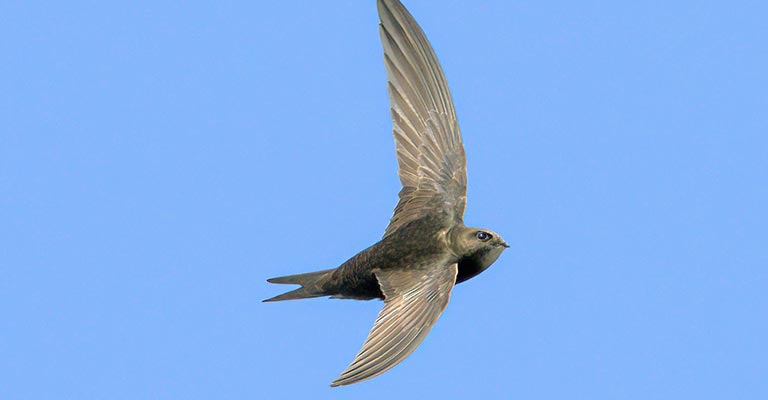
Widely distributed across Europe, Asia, and Africa, the Common Swift is renowned for its exceptional flying abilities.
With dark plumage, sickle-shaped wings, and a high-pitched screaming call, it spends most of its life in the air, even sleeping on the wing.
Mariana Swiftlet
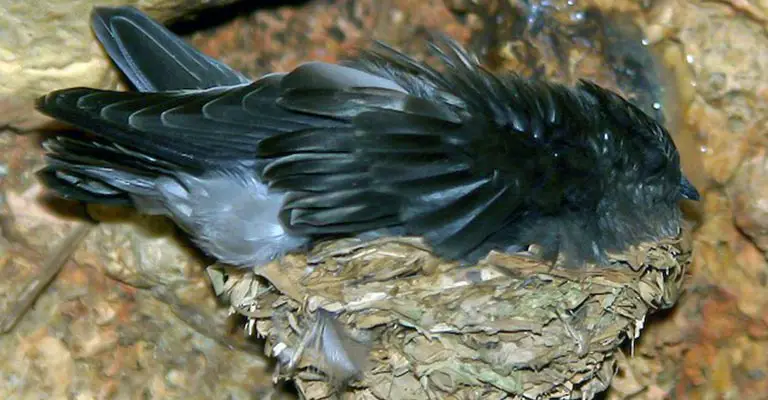
Endemic to the Mariana Islands in the western Pacific, the Mariana Swiftlet is a small, cave-nesting bird.
Recognizable by its brownish-grey plumage and agile flight, it plays a crucial role in pollinating and dispersing seeds in its island habitat.
White-throated Needletail
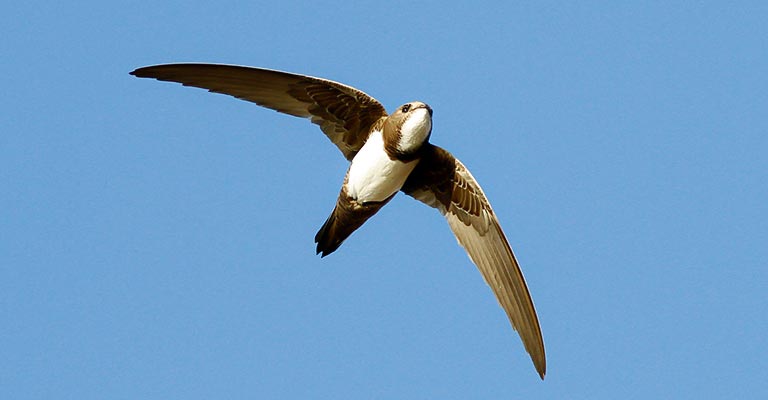
A large, swift species with distinctive spines on its tail feathers, the White-throated needleletail is found in Asia, Australia, and Europe.
Known for its powerful flight, it is often spotted feeding on insects in flight with incredible speed and precision.
Vaux’s Swift
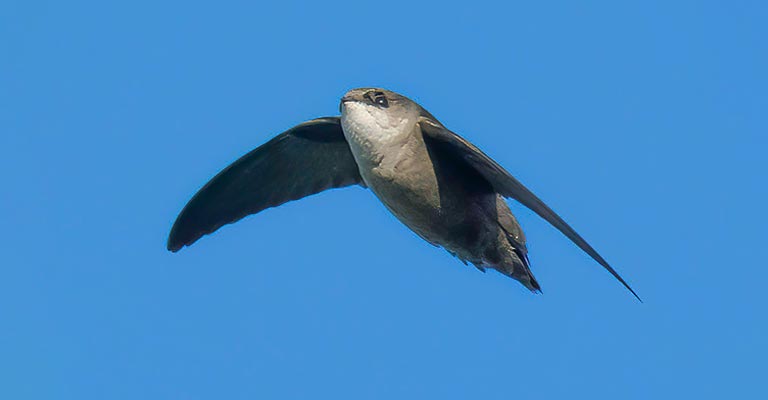
Native to North America, Vaux’s Swift is a medium-sized species with dark plumage and a characteristic cigar-shaped body. It is frequently observed nesting in tree hollows and chimneys during the breeding season.
Chimney Swift
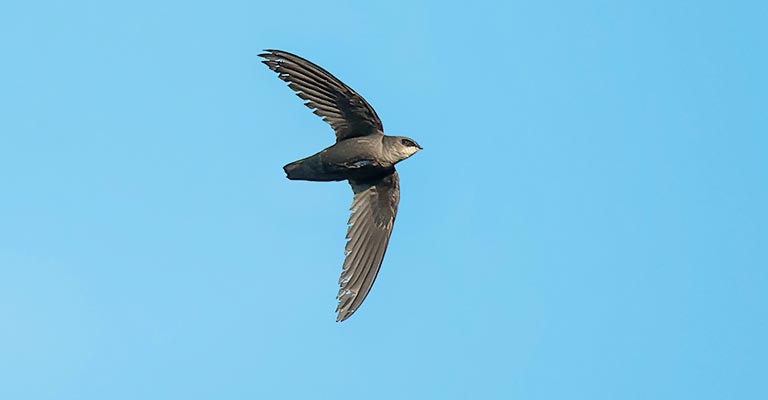
Aptly named, the Chimney Swift is a North American bird with a sleek, cigar-shaped body and long, pointed wings. It is often seen in urban areas, where it nests and roosts in chimneys, demonstrating remarkable aerial agility.
White-collared Swift
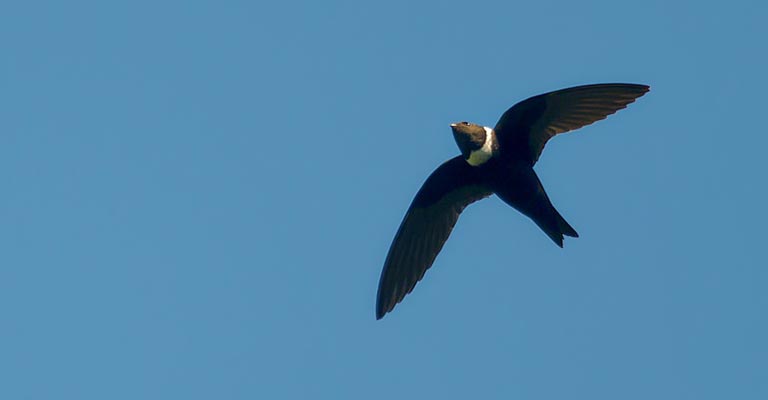
Inhabiting parts of South America, the White-collared Swift is known for its distinctive white collar and rapid flight. This species often forms large colonies in caves or cliffs, providing a breathtaking sight as they soar and glide together.
American Black Swift
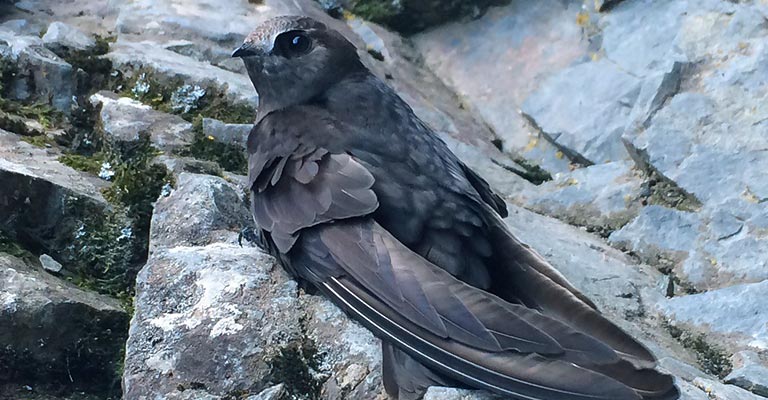
Found in the Americas, the American Black Swift is recognized by its dark plumage and long, swept-back wings.
Nesting behind waterfalls or cliffs, it is adept at catching insects on the wing, contributing to its nomadic and migratory lifestyle.
Swifts Life History
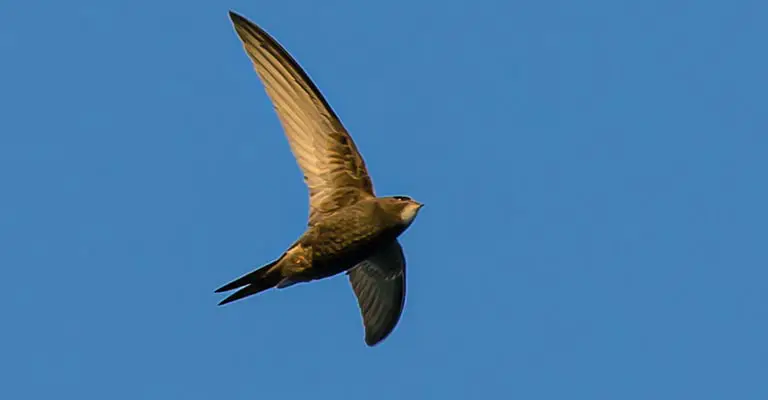
Swifts, belonging to the family Apodidae, are enchanting birds renowned for their extraordinary flying prowess and unique life history.
This overview delves into various aspects of their life cycle, from their dietary habits and preferred habitats to nesting behaviours, breeding patterns, potential diseases, conservation concerns, and the measures taken for their well-being.
Food
Swifts are insectivores, relying on a diet predominantly composed of flying insects.
Their agile flight allows them to capture prey on the wing, including flying insects such as beetles, flies, and mosquitoes. Swifts are known for their continuous aerial foraging, covering vast distances in search of food.
Habitat
Swifts are highly adaptable and can be found in diverse habitats, ranging from urban environments to remote landscapes.
They often frequent areas with abundant flying insects, such as open fields, near bodies of water, and even cityscapes. Some species, like chimney swifts, have adapted to nesting and roosting in human-made structures.
Range Map
The range of swifts varies widely among species. While some are more localized, others engage in extensive migrations.
A range map would illustrate the distribution of swift species across continents and regions, showcasing their remarkable ability to cover vast distances during migration.
Nesting
Swifts employ a variety of nesting sites, including cliffs, caves, trees, and human-made structures like chimneys.
They are known for using their saliva to create a glue-like substance to attach nesting materials. The nests are often compact and cup-shaped, providing a secure environment for their eggs and chicks.
| Nesting Details | Facts |
| Clutch Size | Varies among species, typically 2-5 eggs |
| Number of Broods | Usually one per breeding season |
| Egg Length | Around 1 to 2 centimeters |
| Egg Width | Approximately 1 centimeter |
| Incubation Period | Ranges from 18 to 23 days, shared by both parents |
| Nestling Period | White or pale in colour, small and elongated shape |
| Egg Description | Gradually, fledglings depend on their parents after leaving the nest. |
| Nest Type | Cup-shaped, constructed with saliva, feathers, and plant materials |
| Nest Location | Varied, including cliffs, caves, trees, and human-made structures like chimneys |
| Parental Involvement | Both parents contribute to incubation and feeding |
| Fledgling Independence | Gradual, fledglings depend on their parents after leaving the nest. |
Breeding
Breeding seasons vary among species, but swifts generally breed during the warmer months.
They are monogamous and display elaborate courtship displays, showcasing their aerial skills. Female swifts lay a few eggs, and both parents share the responsibilities of incubating and feeding the chicks.
Diseases
While swifts are generally hardy birds, they can be susceptible to various diseases, including respiratory infections and external parasites.
Stress, habitat loss, and environmental factors can contribute to their vulnerability. Monitoring their health is crucial for ensuring their well-being.
Treatment
Addressing Swift’s health issues often involves a multi-faceted approach.
Veterinary care may be necessary for specific ailments, while conservation efforts to preserve their natural habitats and minimize environmental threats can contribute significantly to their overall health.
Conservation
Swifts face challenges such as losing suitable nesting sites, pesticide exposure, and climate change.
Conservation efforts involve protecting their habitats, promoting awareness about their ecological importance, and implementing measures to mitigate human-made threats.
Preserving roosting sites and creating artificial nesting structures are among the strategies employed to support swift populations.
The life history of swifts is a testament to their adaptability and remarkable aerial capabilities.
Understanding and addressing the various aspects of their lives are crucial in ensuring these captivating birds’ conservation and well-being.
10 Fun Facts About Swifts
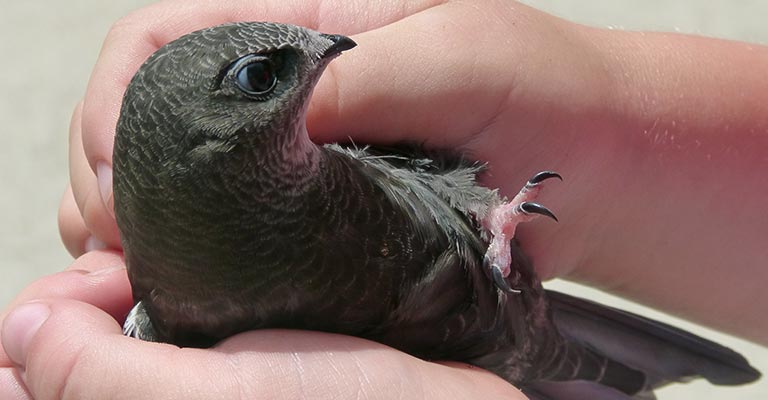
The swifts are among the most fascinating avian species with their exceptional aerial abilities and unique behaviours. Here are 10 fun facts that shed light on the intriguing world of swifts.
- Aerial Acrobat Mastery: Swifts are unparalleled in the sky, capable of flying for months without landing. Their swift and continuous flight, often accompanied by acrobatic manoeuvres, is remarkable.
- Sleeping on the Wing: These avian wonders take “power naps” while flying, literally sleeping on the wing. They can shut down half of their brain at a time, allowing the other half to stay alert for navigation and avoiding obstacles.
- Migration Marvels: Swifts embark on epic migration journeys, covering thousands of kilometres. Some species migrate between the Northern and Southern Hemispheres, showcasing their endurance and navigational skills.
- No Time for Nest-Gazing: Swifts are known for their rapid nesting process. They can construct a nest in a few days, utilizing their saliva to glue materials together. The efficiency is crucial, given their nomadic lifestyle.
- Insectivorous Appetite: These birds are voracious insect eaters, consuming many flying insects, including mosquitoes, flies, and beetles. Their diet contributes to natural pest control in the areas they inhabit.
- High-Pitched Chatter: During flight, swifts emit high-pitched screams or chattering sounds. These vocalizations play a role in communication, potentially aiding group cohesion and mate attraction.
- Urban Dwellers: Swifts have adapted to urban environments, often utilizing buildings and structures for nesting and roosting. Chimneys, in particular, provide suitable spaces for their nests.
- Longevity in the Air: Swifts spend most of their lives in flight, with some individuals only landing during the breeding season. Their wings are adapted for endurance, allowing them to cover immense distances.
- Monogamous Mates: Swifts exhibit monogamous mating behaviour, forming long-term partnerships with their mates. During courtship, they engage in intricate aerial displays to strengthen their bond.
- Conservation Concerns: Despite their adaptability, swifts face habitat loss, climate change, and the destruction of nesting sites. Conservation efforts aim to protect these incredible birds and raise awareness about their importance in ecosystems.
These 10 fun facts illuminate the remarkable characteristics and behaviours that make Swifts a captivating and unique group of birds in the avian world.
Wrapping Up
Swifts are vital pest control contributors and crucial in maintaining ecological balance. However, their existence is not without challenges, with habitat loss, climate change, and conservation concerns looming.
Recognizing the significance of these birds in our ecosystems is the first step toward fostering conservation initiatives that protect their habitats and ensure their continued existence.
Swift’s story is about endurance, agility, and symbiosis with the natural world.
By appreciating and understanding these winged wonders, we can actively contribute to their preservation, ensuring that the skies remain adorned with graceful flights for generations.